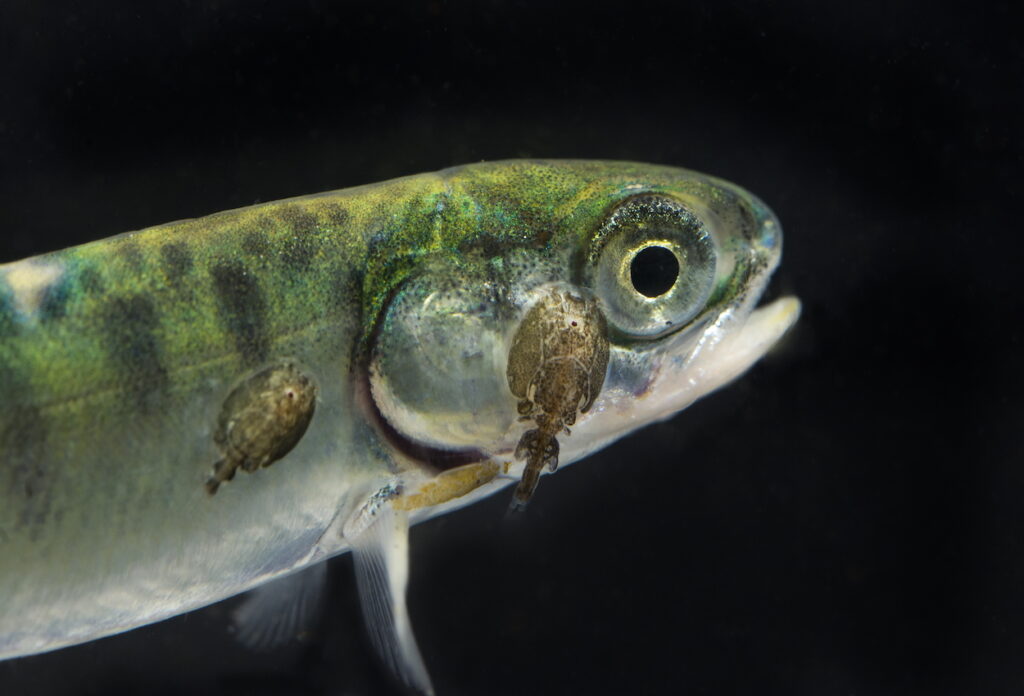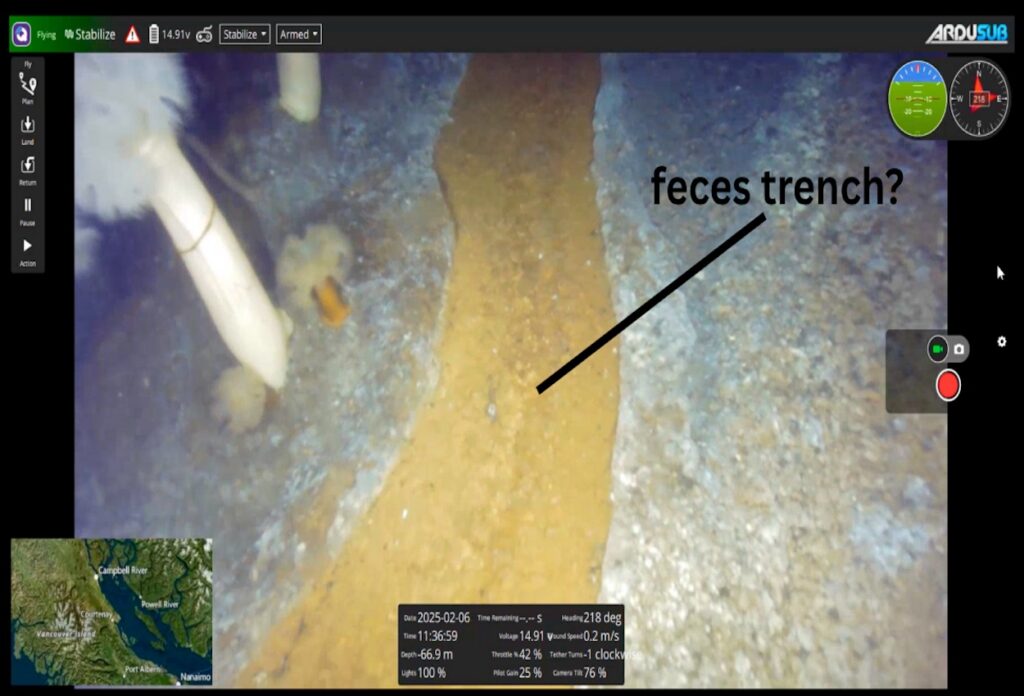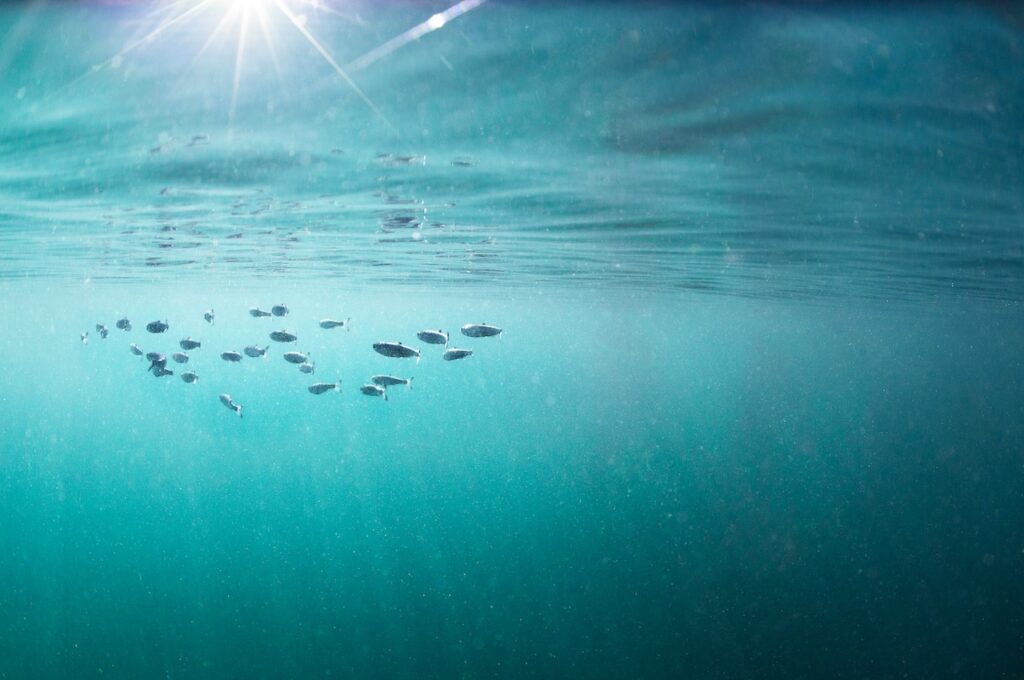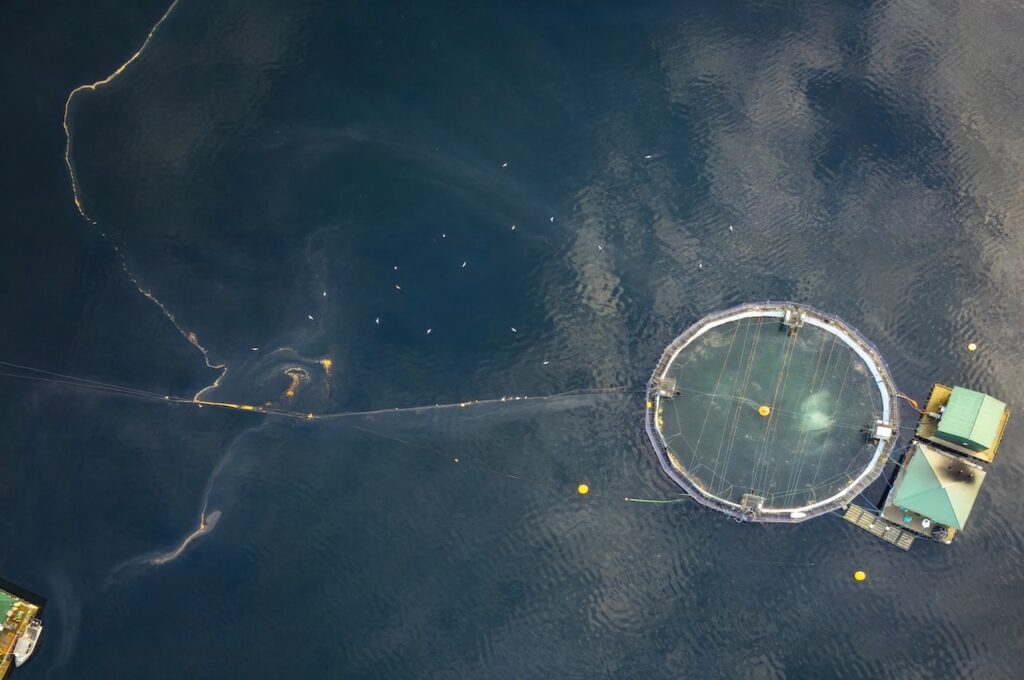Bonny was cooking an elaborate brunch on a Sunday afternoon when the phone rang. It was Lennie John from Ahousaht First Nation. Tsimka Martin from Tla-o-qui-aht First Nation had been hiking up the hill at Cox Bay with her partner John when they spotted something bizarre-looking being towed north, past the Lennard Island lighthouse, into Clayoquot Sound. They realized that this was Cermaq’s new experimental salmon farm, what Cermaq calls a Semi Closed Containment System (SCCS).
Tsimka called Lennie who called Bonny. Cancel frittata! Start scrambling eggs, and scrambling to get our cameras and gear ready. A quick bite later, Lennie pulls up at our beach. We hop off the rocks into his boat and zoom off towards Tofino to pick up Tsimka and John. What is going to happen?
It’s overcast and calm; no fog. A light rain begins to fall as we motor out to intercept the apparatus, which is now inside Wickaninnish Island opposite Tin Wis. It looks like they are swapping tugboats out; the floating framework is slowly starting to move again as the original tug starts heading back to Tofino.
Bonny has been frantically mustering our Clayoquot Salmon Investigation volunteers. Sure enough, a couple of teams are able to mobilize. Keegan and Storm show up first; then Lee with a couple of friends in another boat. The beginnings of a flotilla forming up!
Polluting poop and pathogens
There’s a reason the founders of the Nuuchahnulth Salmon Alliance and Clayoquot Action are alarmed by this arrival. The device is experimental, and holds out little promise for wild salmon. It’s not clear exactly what will be contained by this device. Pumps will be used to move the volume of 7.2 Olympic swimming pools in and out of the pen—every hour. That’s almost two hundred swimming pools a day, every day.
There will be no way to filter out viral particles or other pathogens—and Cermaq admits they have the deadly Norwegian Piscine orthoreovirus (PRV) on their farms. (To be clear, they do not admit it is from the Atlantic; nor that it is deadly. Their story is that PRV is from BC, and harmless to wild salmon. Simply not true.)
It came out during Cermaq’s presentation to Tofino Council that this device will not even filter out the fish poop. A fish farm containing half a million fish emits the equivalent sewage of a city of 150,000 people! And Cermaq has 14 operations here in Clayoquot Sound UNESCO Biosphere Region.
With the federal government having promised to remove salmon farms from BC waters by 2025, Cermaq’s SCCS is a step in the wrong direction, and a waste of their money. Of course they’re not stupid or planning to waste money. Which means this is a cynical attempt to preempt the requirement to remove their farms from the ocean with a half-measure designed to confuse the public who might believe this thing is somehow better than a standard open-net pen salmon farm.
As the rain clouds thickened, darkening the late afternoon, our flotilla headed back to Tofino. We were there to bear witness together, which felt good. This story is far from over…
Dan Lewis is Executive Director of Clayoquot Action.






